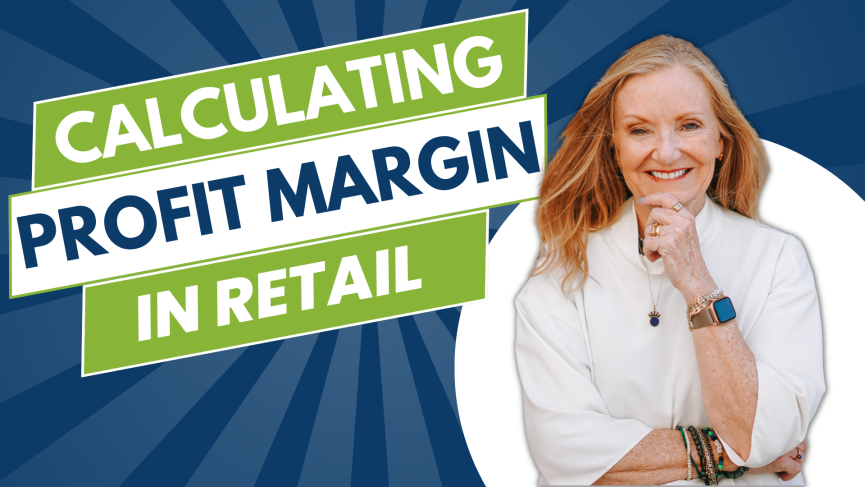In the dynamic world of retail, understanding and optimizing profit margins is crucial for long-term success. Recently, Pamela asked: How do I calculate profit margins to succeed in retail?
In this blog I’ll explain the concept of cash margin, exploring its calculation, distinguishing it from gross margin, and delving into its impact on cash flow. Whether you’re a seasoned retail veteran or a budding entrepreneur, mastering cash margin could be the key to unlocking financial success in your business.
The Basics of Profit Margins
Before we delve into the nuances of cash margin, let’s revisit the basics of profit margins in retail. In essence, profit margins represent the percentage of revenue that translates into profit after deducting costs. For retail store owners, understanding and optimizing profit margins are vital for sustainable growth.
Unveiling Cash Margin
With our RETAILMavens clients, we always use cash margin because we find that it has a bigger impact on cash flow. Cash margin is determined by subtracting the amount received from the amount sold in a given period, providing a more immediate insight into the cash flow of the business. Unlike gross margin, which factors in the underlying inventory, cash margin focuses solely on the actual cash generated from sales.
Cash Margin vs. Gross Margin
To fully grasp the significance of cash margin, it’s essential to differentiate it from its counterpart, gross margin. While gross margin considers the cost of goods sold and the underlying inventory, cash margin zooms in on the actual cash received from sales. For retail store owners, understanding this distinction is pivotal in making informed decisions about pricing, inventory management, and overall financial strategy.
Calculating Cash Margin
Calculating cash margin involves subtracting the amount received from the amount sold. This straightforward calculation provides a real-time snapshot of how much cash is generated from the products or services offered. Retailers can use this metric to gauge the immediate impact of their sales on cash flow, allowing for more agile financial decision-making.
The Inventory Conundrum
While cash margin offers a valuable perspective on cash flow, I do want to caution that significant changes in inventory levels could complicate the picture. In retail, where inventory turnover is constant, it’s crucial to consider how shifts in stock levels may influence cash margin calculations. This insight becomes particularly relevant when assessing the financial health of the business and planning for future growth.
Adapting to Changes in Inventory
Understanding the impact of inventory changes on cash margin can prompt you to adapt your approach accordingly. If the amount of merchandise you have in stock changes a lot, you might need to use some extra metrics or try different strategies to make sure your financial insights are spot-on.
The Ripple Effect on Cash Flow
Cash margin isn’t just a metric; it’s a powerful tool that influences cash flow—the lifeblood of any retail business. By consistently monitoring cash margin, you can make informed decisions about pricing, promotions, and inventory management, ultimately optimizing cash flow and ensuring the financial sustainability of your operations.
In the ever-evolving landscape of retail, mastering cash margin is a game-changer. This metric offers a real-time understanding of cash flow, enabling retailers to navigate the challenges of inventory management and make informed decisions that impact the bottom line. By incorporating cash margin into your financial toolkit, you’re not just calculating profits; you’re empowering your retail business for sustained success in a competitive market.
Need help improving profits and reducing overwhelm? Check out our free training “3 Steps to Maximize Profit & Reduce Overwhelm” where I’ll share the only 3 hats you should be wearing in your retail business (I bet you’re wearing way more, and it’s getting harder and harder to manage)! Click here to register!


